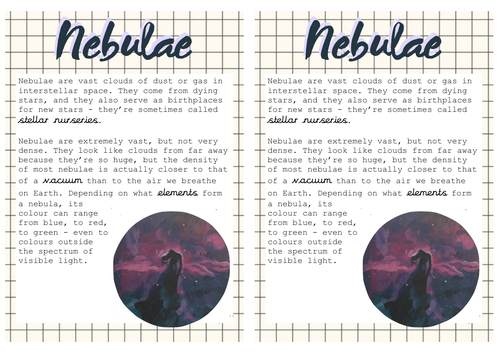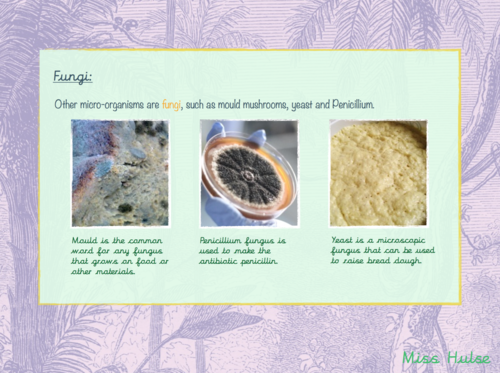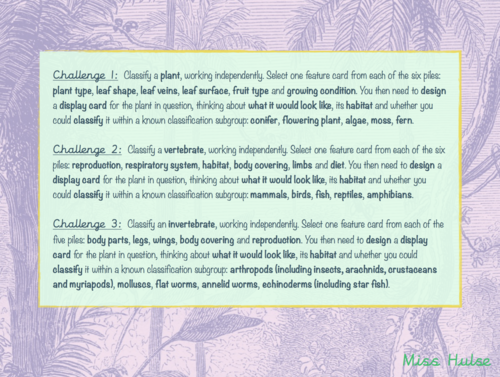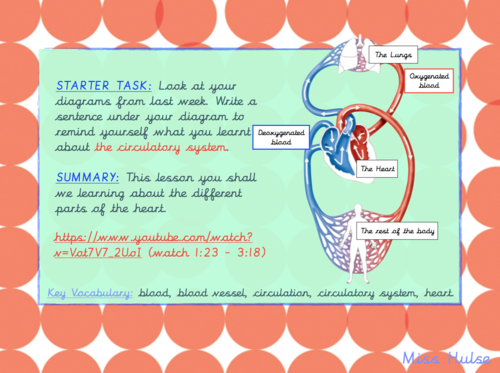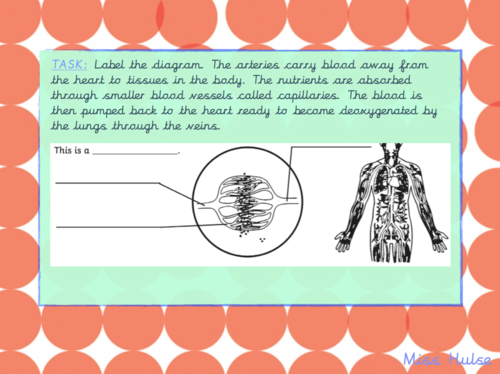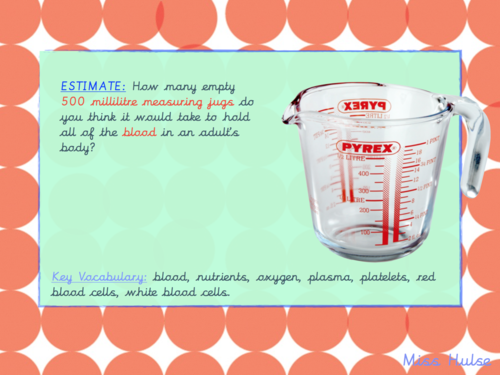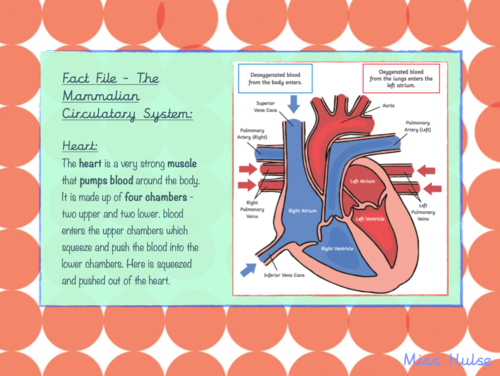122Uploads
12k+Views
14k+Downloads
Primary science

Science - Living things and their habitats L3/4 - The Nature Library (Upper KS2 - Year 6)
This lesson is the third and fourth lesson from a Science scheme of work for upper KS2 (Year 6), inspired by the Collins Snap Science curriculum and adapted for my class. There are ten lessons in total.
(01.03.23) UPDATE: PowerPoint Available to edit (please note this may need slight reformatting depending on your font settings)
Resource bundle includes: Lesson Powerpoint (PDF) and accompanying resources. I’ve also included my Medium Term Plan for the entire scheme!
Slide one: Title page
Slide two: Learning Intention and Targets for Success
Slide three: Resources
Slide four: Exam-Style Starter
Slide five: Explore
Slide six: Feedback
Slide seven: Vertebrates and Invertebrates
Slide eight: Vertebrates
Slide nine: Invertebrates
Slide ten: Invertebrates - arthropods
Slide eleven: Vertebrate Discussion word mat
Slide twelve: Invertebrate Discussion word mat
Slide thirteen: Arthropod Discussion word mat
Slide fourteen: Dichotomous Key for Animals
Slide fifteen: Animalia Fact File Task
Slide sixteen: Animalia Fact File Task feedback
Slide seventeen to eighteen: Classification challenge
Slide nineteen: End of the Lesson Quiz
Slide twenty: End of the Lesson Quiz feedback
Bundle

Science - Animals including humans - Body Pump Bundle (Upper KS2 - Year 6)
This bundle contains five lessons from a Science scheme of work for upper KS2 (Year 6), inspired by the Collins Snap Science curriculum and adapted for my class.
Resource bundle includes: Lesson slides (PDF) and accompanying resources, including a knowledge organiser designed to help teacher subject knowledge.
Most of these lessons will happily span two lessons as they are knowledge and vocabulary-rich.
(01.03.23) UPDATE: PowerPoints Available to edit for every lesson (please note this may need slight reformatting depending on your font settings)

Science - Living things and their habitats L1/2 - The Nature Library (Upper KS2 - Year 6)
This lesson is the first and second lesson from a Science scheme of work for upper KS2 (Year 6), inspired by the Collins Snap Science curriculum and adapted for my class. There are ten lessons in total.
(01.03.23) UPDATE: PowerPoint Available to edit (please note this may need slight reformatting depending on your font settings)
Resource bundle includes: Lesson Powerpoint (PDF) and accompanying resources. I’ve also included my Medium Term Plan for the entire scheme!
Slide one: Title page
Slide two: Learning Intention and Targets for Success
Slide three: Resources
Slide four: Explore
Slide five: Starter Task
Slide six: Feedback
Slide seven: Title page
Slide eight: Learning Intention and Targets for Success
Slide nine: Resources
Slide ten to eleven: Explore
Slide twelve: Living Things classification
Slide thirteen: Plantae Characteristics
Slide fourteen: Challenge
Slide fifteen: Dichotomous Key for Plants
Slide sixteen: Discussion word mat
Slide seventeen to eighteen: Reflect and Review
Slide nineteen: End of the Lesson Quiz
Slide Twenty: End of the Lesson Quiz feedback

Science - Living things and their habitats L5 - The Nature Library (Upper KS2 - Year 6)
This lesson is the fifth lesson from a Science scheme of work for upper KS2 (Year 6), inspired by the Collins Snap Science curriculum and adapted for my class. There are ten lessons in total.
(01.03.23) UPDATE: PowerPoint Available to edit (please note this may need slight reformatting depending on your font settings)
Resource bundle includes: Lesson Powerpoint (PDF) and accompanying resources. I’ve also included a Medium Term Plan for the entire scheme!
Slide one: Title page
Slide two: Learning Intention and Targets for Success
Slide three: Resources
Slide four: Explore
Slide five: Enquire
Slide six: End of the Lesson Quiz
Slide seven: End of the Lesson Quiz feedback
Bundle

Science - Living things and their habitats scheme - The Nature Library (Upper KS2 - Year 6)
This bundle contains ten lessons for a Science scheme of work for upper KS2 (Year 6), inspired by the Collins Snap Science curriculum and adapted for my class. There are ten lessons in total.
Resource bundle includes: Lesson Powerpoint (PDF) and accompanying resources. I’ve also included a Medium Term Plan for the entire scheme!
(01.03.23) UPDATE: PowerPoints Available to edit for every lesson (please note this may need slight reformatting depending on your font settings)

L1 What is a celestial body? (Year 5 Space)
This lesson is the first lesson from my Primary Science Space scheme of work for upper KS2 (Year 5).
The lesson focuses on Celestial Bodies and has been tailored for pupils after years of being a Year 5 practitioner and Science lead.
Lesson Objective: To identify celestial bodies.
Scientific Question: What is a celestial body?
Enquiry Type: Research using secondary sources.
This is the first lesson of many I hope to convert into user-friendly documents (as my planning slides currently remain of Lynx files).
Resource bundle includes: Lesson slides (PDF and powerpoint) and scaffolded accompanying resources (word and PDF). I’ve included powerpoint and word for ease of editing - although as I know these massively reformat I’ve also included PDF versions.
Slide one: Title page
Slide two: Key vocabulary pre-teach
Slide three: Enquiry type
Slide four to five: Starter (answers included)
Slide six: Celestial bodies input
Slide seven: Celestial bodies task using QR codes for individual research
Slide eight: Fact file template and modelled example
Slide nine: End of the Lesson Quiz
Slide ten: End of the Lesson Quiz feedback

L2 What does our solar system look like? (Year 5 Science)
This lesson is the second lesson from my Primary Science Space scheme of work for upper KS2 (Year 5).
The lesson focuses on Celestial Bodies and has been tailored for pupils after years of being a Year 5 practitioner and Science lead. I have also received Primary Space Education training from the Royal Observatory in Greenwich.
Lesson Objective: To know the planets of the solar system.
Scientific Question: What does our solar system look like?
Enquiry Type: Pattern seeking
This is the second lesson of many I hope to convert into user-friendly documents (as my planning slides currently remain of Lynx files).
Resource bundle includes: Lesson slides (PDF and powerpoint) and scaffolded accompanying resources (word and PDF). I’ve included powerpoint and word for ease of editing - although as I know these massively reformat I’ve also included PDF versions.
Slide one: Title page
Slide two: Key vocabulary pre-teach
Slide three: Enquiry type
Slide four: Planets introduction
Slide five to six: Starter (answers included)
Slide seven: Planet research task with QR code for individual research extension
Slide eight: Planet research answers table
Slide nine: Class model extension activity
Slide ten: End of the Lesson Quiz
Slide eleven: End of the Lesson Quiz feedback

Science - Living things and their habitats L8 - The Nature Library (Upper KS2 - Year 6)
This lesson is the eighth lesson from a Science scheme of work for upper KS2 (Year 6), inspired by the Collins Snap Science curriculum and adapted for my class. There are ten lessons in total.
(01.03.23) UPDATE: PowerPoint Available to edit (please note this may need slight reformatting depending on your font settings)
Resource bundle includes: Lesson Powerpoint (PDF) and accompanying resources. I’ve also included a Medium Term Plan for the entire scheme!
Slide one: Title page
Slide two: Learning Intention and Targets for Success
Slide three: Resources
Slide four to five: Explore
Slide six: Aristotle
Slide seven: Carl Linnaeus
Slide eight: History of Classification
Slide nine: Reading Comprehension Activity
Slide ten: Why were Fungi once classed as Plants extension
Slide eleven: End of the Lesson Quiz
Slide twelve: End of the Lesson Quiz feedback

Space-Themed Table Names
This pack includes 5 space-themed table names for your classroom. Each table name has a brief description of the celestial body.
I use these within my first term alongside my Science Space topic.
They allow for great sharing opportunities between tables, as well as acting as a great behaviour and classroom management tool for group praise and positive reinforcement.
The names include:
Nebulae
Aurorae
Comets
Meteors
Asteroids

Science - Living things and their habitats L7 - The Nature Library (Upper KS2 - Year 6)
This lesson is the seventh lesson from a Science scheme of work for upper KS2 (Year 6), inspired by the Collins Snap Science curriculum and adapted for my class. There are ten lessons in total.
(01.03.23) UPDATE: PowerPoint Available to edit (please note this may need slight reformatting depending on your font settings)
Resource bundle includes: Lesson Powerpoint (PDF) and accompanying resources. I’ve also included a Medium Term Plan for the entire scheme!
Slide one: Title page
Slide two: Learning Intention and Targets for Success
Slide three: Resources
Slide four: Explore
Slide five: Fungi Recap
Slide six: Beneficial/Harmful Table
Slide seven: Explore - Scientific Question
Slide eight: Explore - Prediction
Slide nine: Explore - Variables
Slide ten: Explore - Variables feedback
Slide eleven: Results
Slide twelve: Results table
Slide thirteen: The explanation
Slide fourteen: Conclusion writing
Slide fifteen: Scatter Graph
Slide sixteen: End of the Lesson Quiz
Slide seventeen: End of the Lesson Quiz feedback

Science - Living things and their habitats L6 - The Nature Library (Upper KS2 - Year 6)
This lesson is the sixth lesson from a Science scheme of work for upper KS2 (Year 6), inspired by the Collins Snap Science curriculum and adapted for my class. There are ten lessons in total.
(01.03.23) UPDATE: PowerPoint Available to edit (please note this may need slight reformatting depending on your font settings)
Resource bundle includes: Lesson Powerpoint (PDF) and accompanying resources. I’ve also included my Medium Term Plan for the entire scheme!
Slide one: Title page
Slide two: Learning Intention and Targets for Success
Slide three: Resources
Slide four to seven: Explore
Slide eight: Bacteria
Slide nine: Fungi
Slide ten: Micro-organisms overview
Slide eleven: Beneficial/Harmful Task
Slide twelve: Beneficial/Harmful Task feedback
Slide thirteen: Challenge
Slide fourteen: End of the Lesson Quiz
Slide fifteen: End of the Lesson Quiz feedback

Science - Living things and their habitats L9 - The Nature Library (Upper KS2 - Year 6)
This lesson is the ninth lesson from a Science scheme of work for upper KS2 (Year 6), inspired by the Collins Snap Science curriculum and adapted for my class. There are ten lessons in total.
(01.03.23) UPDATE: PowerPoint Available to edit (please note this may need slight reformatting depending on your font settings)
Resource bundle includes: Lesson Powerpoint (PDF) and accompanying resources. I’ve also included a Medium Term Plan for the entire scheme!
Slide one: Title page
Slide two: Learning Intention and Targets for Success
Slide three: Resources
Slide four: Explore
Slide five: Starter
Slide six: Starter feedback
Slide seven: John Ray
Slide eight: Carl Linnaeus
Slide nine: Phillip Miller
Slide ten: Scientific Question
Slide eleven to twelve: Explore
Slide thirteen: Enquire
Slide fourteen: Reflect
Slide fifteen: End of the Lesson Quiz
Slide sixteen: End of the Lesson Quiz feedback

Science - Living things and their habitats L10 - The Nature Library (Upper KS2 - Year 6)
This lesson is the tenth lesson from a Science scheme of work for upper KS2 (Year 6), inspired by the Collins Snap Science curriculum and adapted for my class. There are ten lessons in total.
(01.03.23) UPDATE: PowerPoint Available to edit (please note this may need slight reformatting depending on your font settings)
Resource bundle includes: Lesson Powerpoint (PDF) and accompanying resources. I’ve also included a Medium Term Plan for the entire scheme!
Slide one: Title page
Slide two: Learning Intention and Targets for Success
Slide three: Explore
Slide four: Enquire
Slide five: Challenges (1, 2 and 3)
Slide six: Dichotomous Key for Animals
Slide seven: Dichotomous Key for Plants
Slide eight: Reflect and Review
Slide nine: End of the Lesson Quiz
Slide ten: End of the Lesson Quiz feedback

Science - Animals including humans L5 - Body Pump (Upper KS2 - Year 6)
This lesson is the final lesson from a Science scheme of work for upper KS2 (Year 6), inspired by the Collins Snap Science curriculum and adapted for my class. There are five lessons in total.
Resource bundle includes: Lesson slides (PDF) and accompanying resources.
(01.03.23) UPDATE: PowerPoint Available to edit (please note this may need slight reformatting depending on your font settings)
Most of these lessons will happily span two lessons as they are knowledge and vocabulary-rich.
Slide one: Title page
Slide two: Learning Intention and Targets for Success
Slide three: Key questions
Slide four: Why do we need water?
Slide five: Is all water the same?
Slide six: What happens if we do not get enough water?
Slide seven: Water happens if we get too much?
Slide eight: Fact File Task

Science - Animals including humans L2 - Body Pump (Upper KS2 - Year 6)
This lesson is the second lesson from a Science scheme of work for upper KS2 (Year 6), inspired by the Collins Snap Science curriculum and adapted for my class. There are five lessons in total.
(01.03.23) UPDATE: PowerPoint Available to edit (please note this may need slight reformatting depending on your font settings)
Resource bundle includes: Lesson slides (PDF) and accompanying resources.
Most of these lessons will happily span two lessons as they are knowledge and vocabulary-rich.
Slide one: Title page
Slide two: Learning Intention and Targets for Success
Slide three: Starter task and lesson summary
Slide four: Arteries and Veins
Slide five: Main task and extension
Slide six: Colour coding task
Slide seven: End of the Lesson Quiz
Slide eight: End of the Lesson Quiz feedback

Science - Animals including humans L4 - Body Pump (Upper KS2 - Year 6)
This lesson is the fourth lesson from a Science scheme of work for upper KS2 (Year 6), inspired by the Collins Snap Science curriculum and adapted for my class. There are five lessons in total.
(01.03.23) UPDATE: PowerPoint Available to edit (please note this may need slight reformatting depending on your font settings)
Resource bundle includes: Lesson slides (PDF) and accompanying resources.
Most of these lessons will happily span two lessons as they are knowledge and vocabulary-rich.
Slide one: Title page
Slide two: Review your factfile/create a factfile of the components of blood
Slide three: Learning Intention and Targets for Success
Slide three: Blood Vessels vocabulary teach
Slide four: Blood vessels definition task with video link
Slide five: Blood vessels vocabulary feedback
Slide six: Labelling task
Slide seven: Labelling task feedback
Slide seven: Key question
Slide eight: Review your science comprehension/complete

Science - Animals including humans L3 - Body Pump (Upper KS2 - Year 6)
This lesson is the third lesson from a Science scheme of work for upper KS2 (Year 6), inspired by the Collins Snap Science curriculum and adapted for my class. There are five lessons in total.
(01.03.23) UPDATE: PowerPoint Available to edit (please note this may need slight reformatting depending on your font settings)
Resource bundle includes: Lesson slides (PDF) and accompanying resources.
This lesson will happily span two lessons as it is knowledge and vocabulary-rich.
Slide one: Title page
Slide two: Learning Intention and Targets for Success
Slide three: Estimation starter
Slide four: Main task: Pose scientific questions about blood
Slide five: Blood and its contents
Slide six: Science Comprehension task
Slide seven: Blood soup starter task
Slide eight: Fact File task

Science - Animals including humans L1 - Body Pump (Upper KS2 - Year 6)
This lesson is the first lesson from a Science scheme of work for upper KS2 (Year 6), inspired by the Collins Snap Science curriculum and adapted for my class. There are five lessons in total.
(01.03.23) UPDATE: PowerPoint Available to edit (please note this may need slight reformatting depending on your font settings)
Resource bundle includes: Lesson slides (PDF) and accompanying resources.
Most of these lessons will happily span two lessons as they are knowledge and vocabulary-rich.
Slide one: Title page
Slide two: Learning Intention and Targets for Success
Slide three: Introduction to the circulatory system
Slide four: What do you remember about the skeletal, muscular and digestive systems task
Slide five: Recap task
Slide six: The skeletal system recap
Slide seven: The muscular system recap
Slide eight: The digestive system recap
Slide nine: Lesson overview
Slide ten: Labelling task
Slide eleven: Imagination task and Interactive model
Slide twelve: Extension task
Slide thirteen: End of the Lesson Quiz
Slide fourteen: End of the Lesson Quiz feedback

Science - Animals including humans Knowledge organiser - Body Pump (Upper KS2 - Year 6)
This is a teaching knowledge organiser I created from a Science scheme of work for upper KS2 (Year 6), inspired by the Collins Snap Science curriculum and adapted for myself. It accompanies my Body Pump scheme of work.









